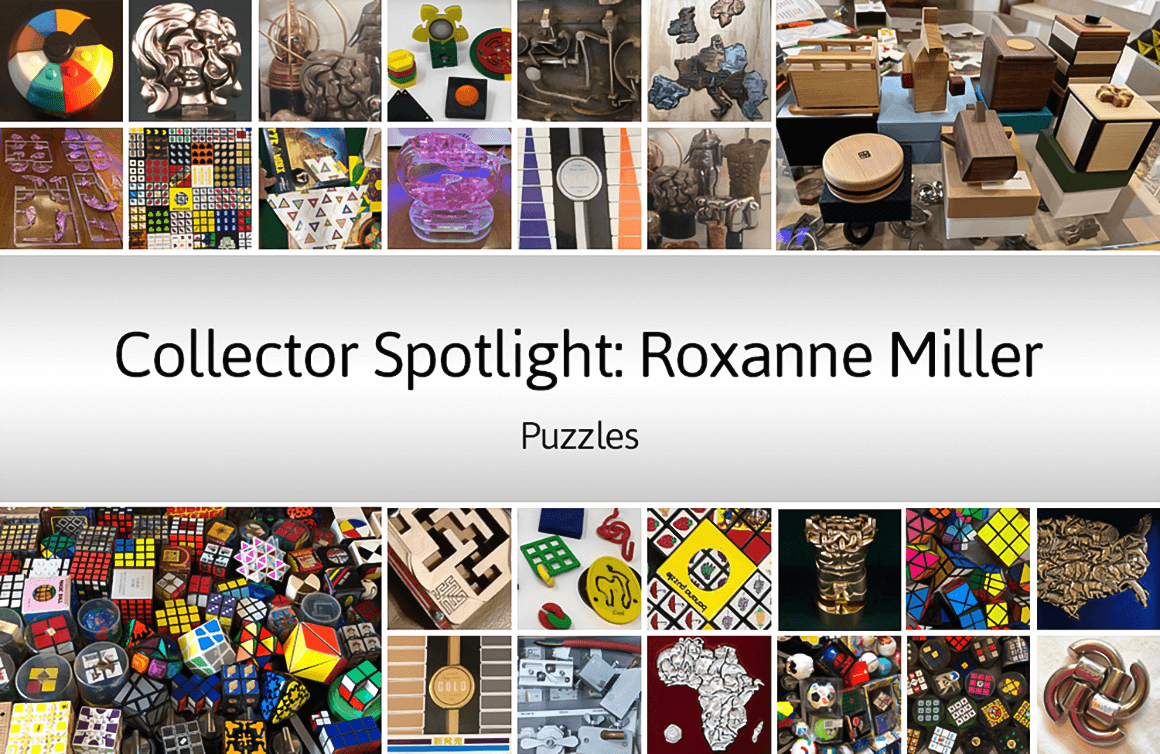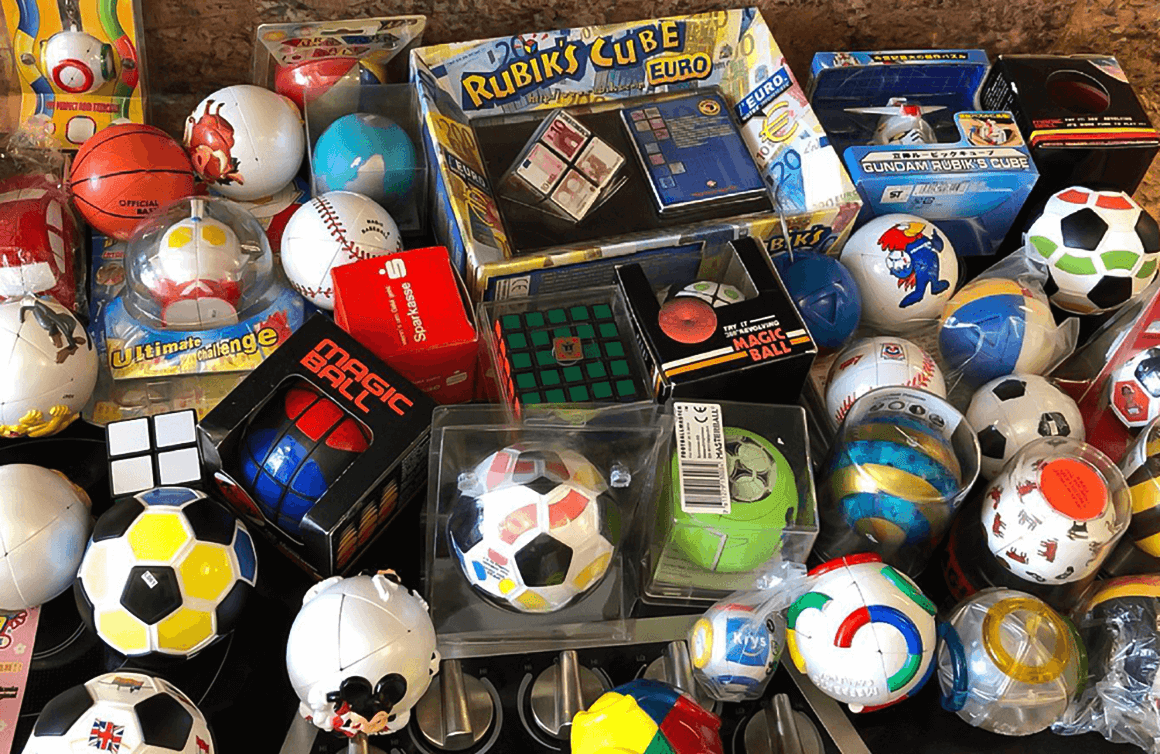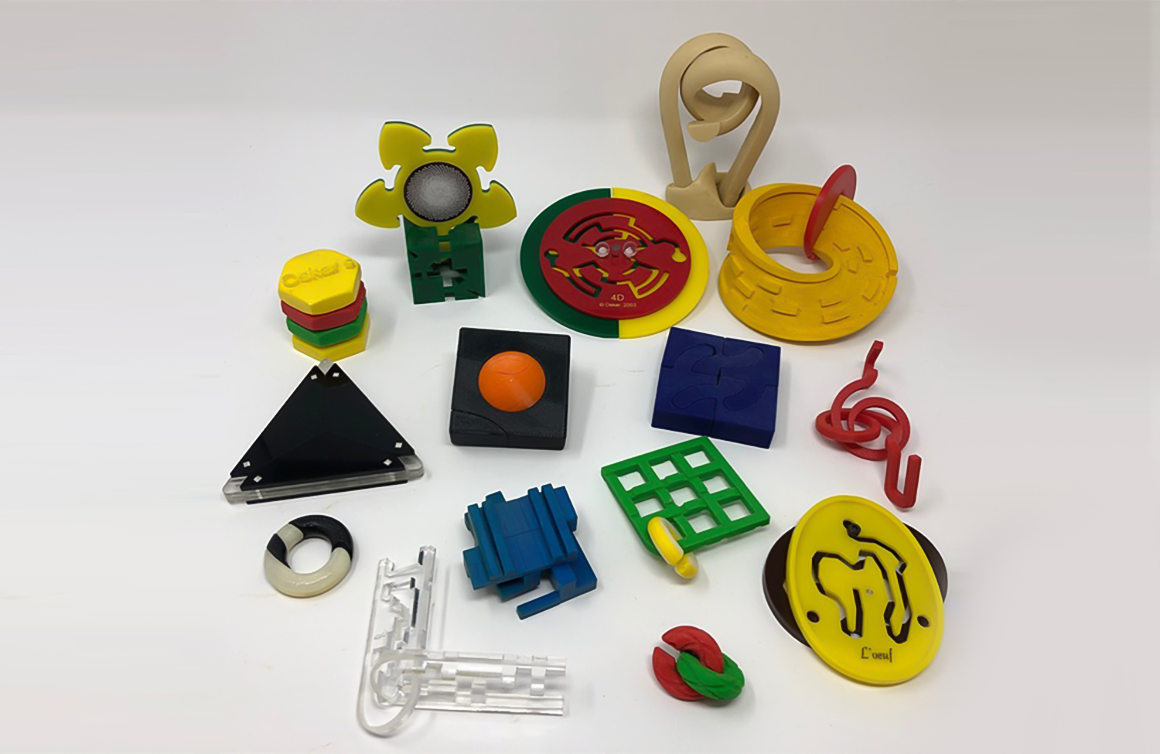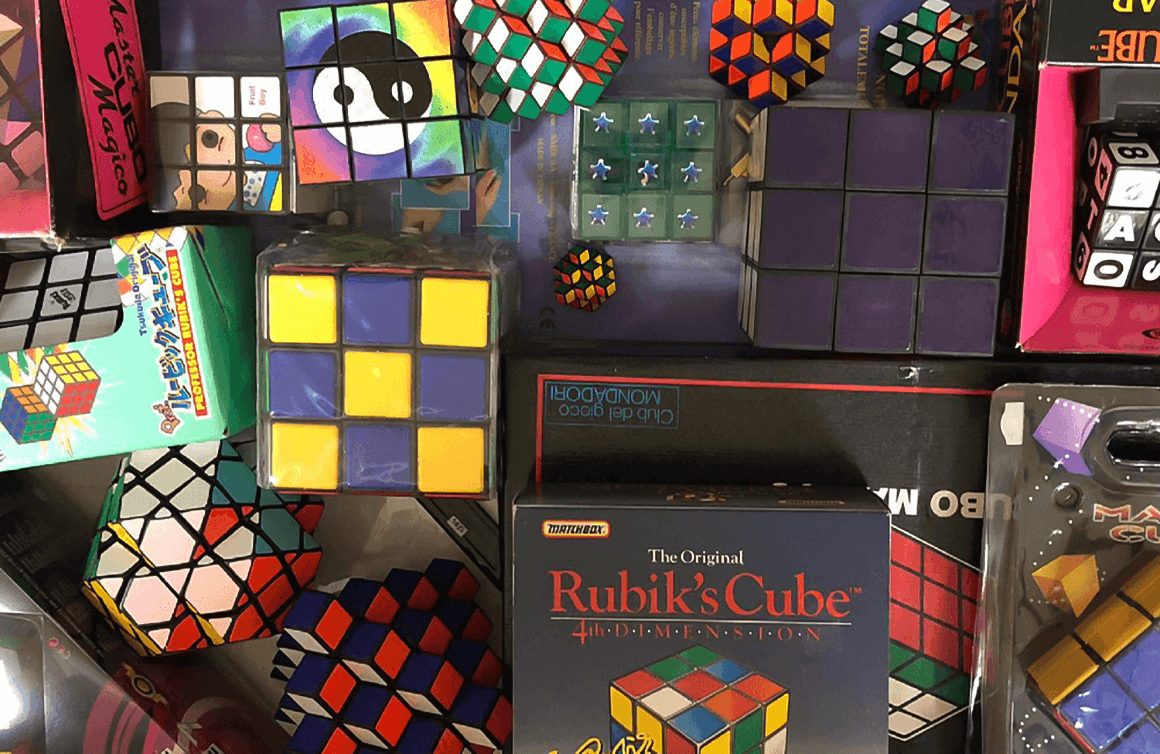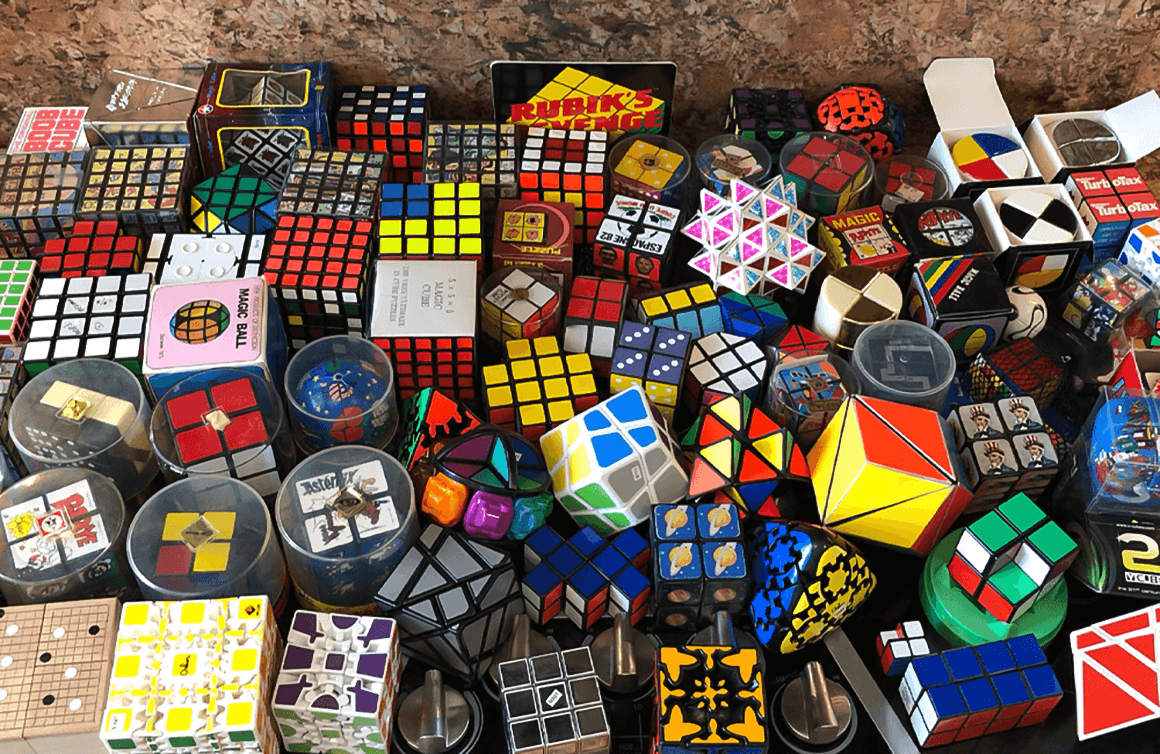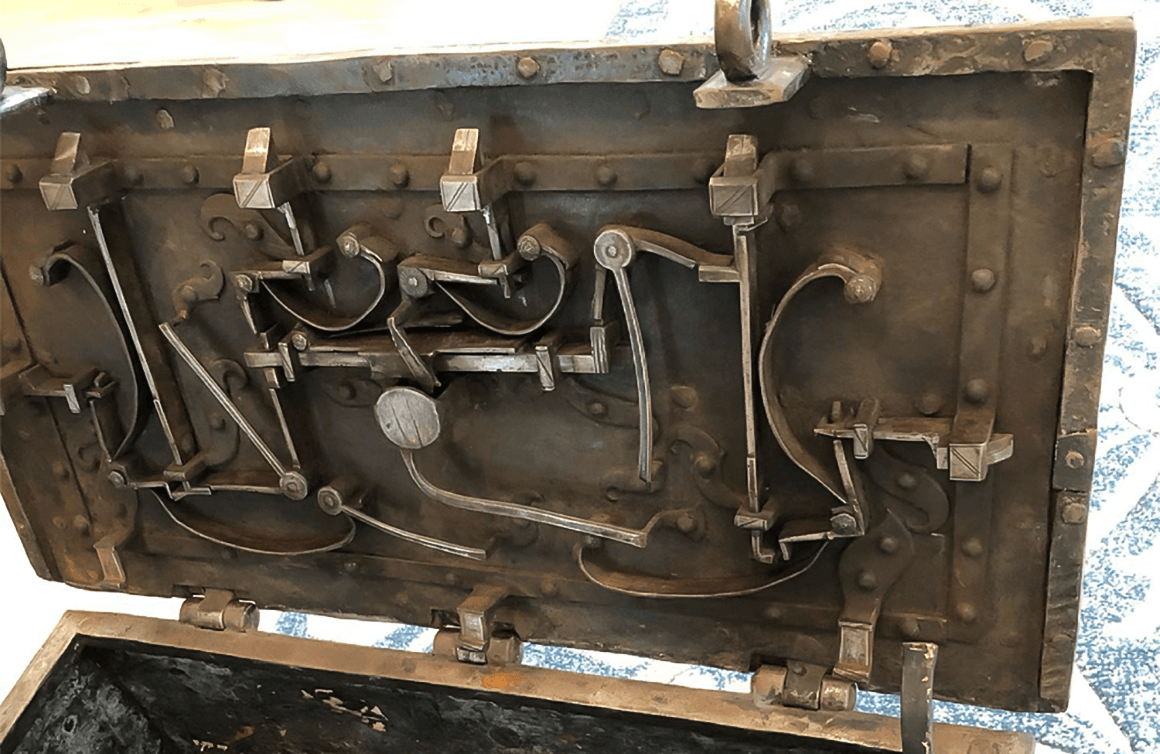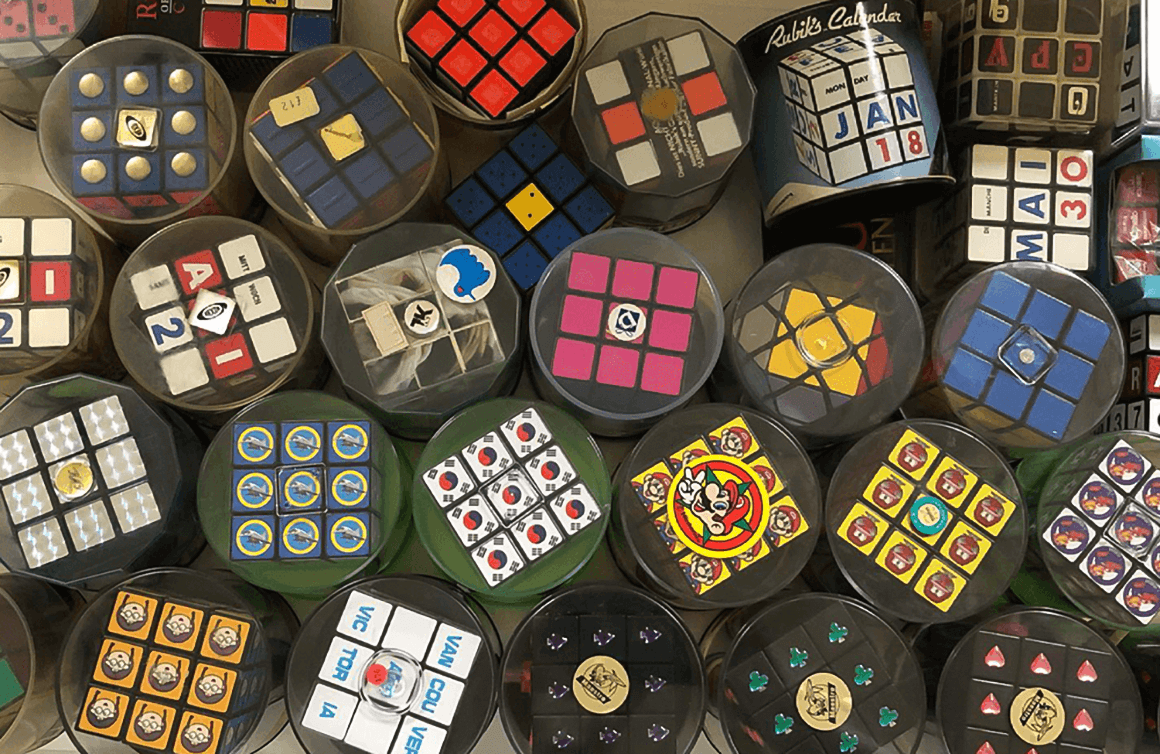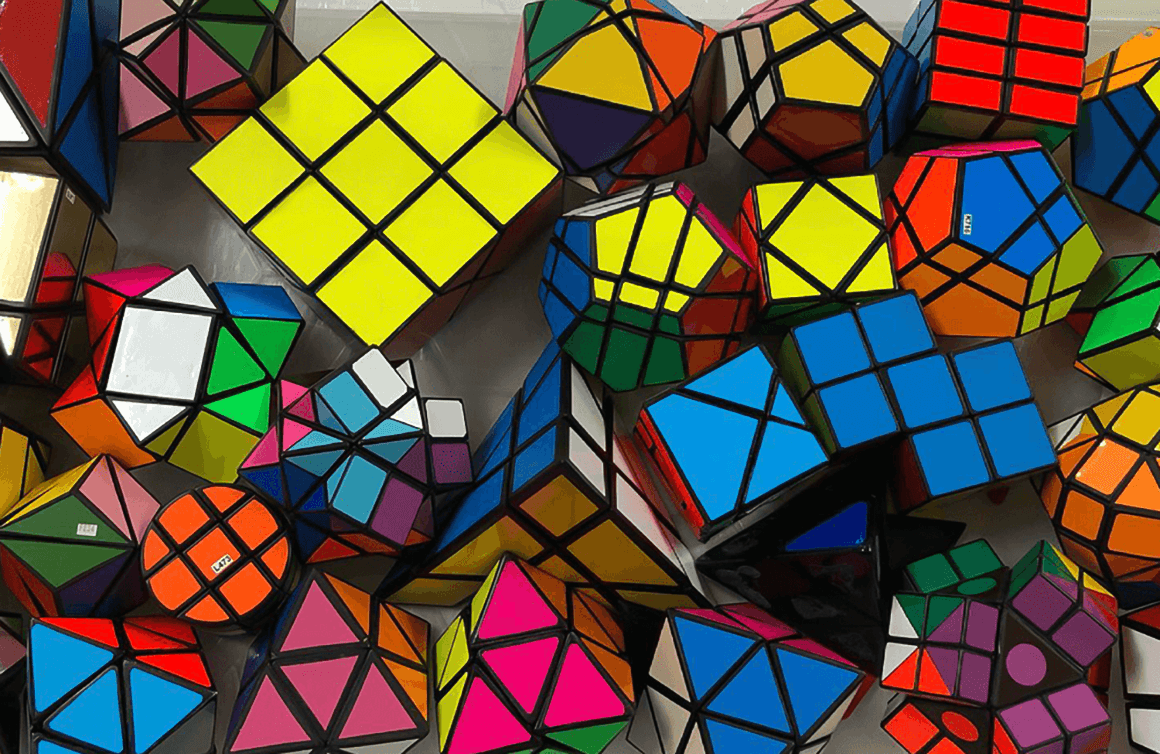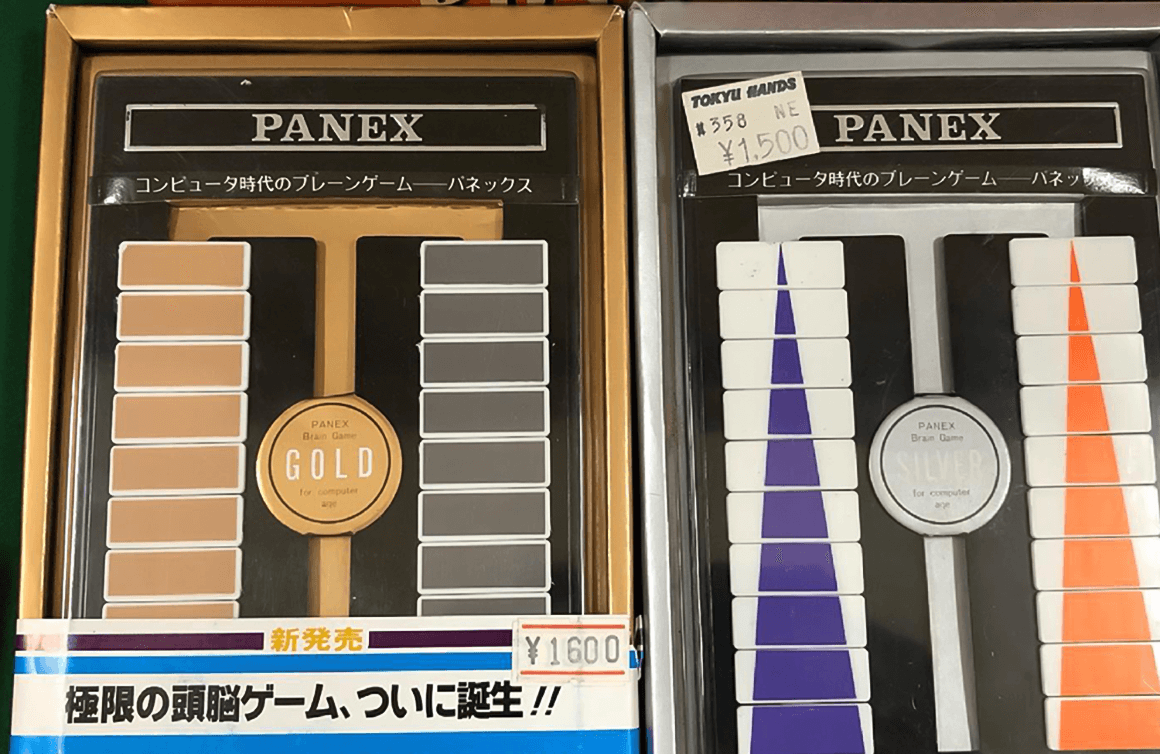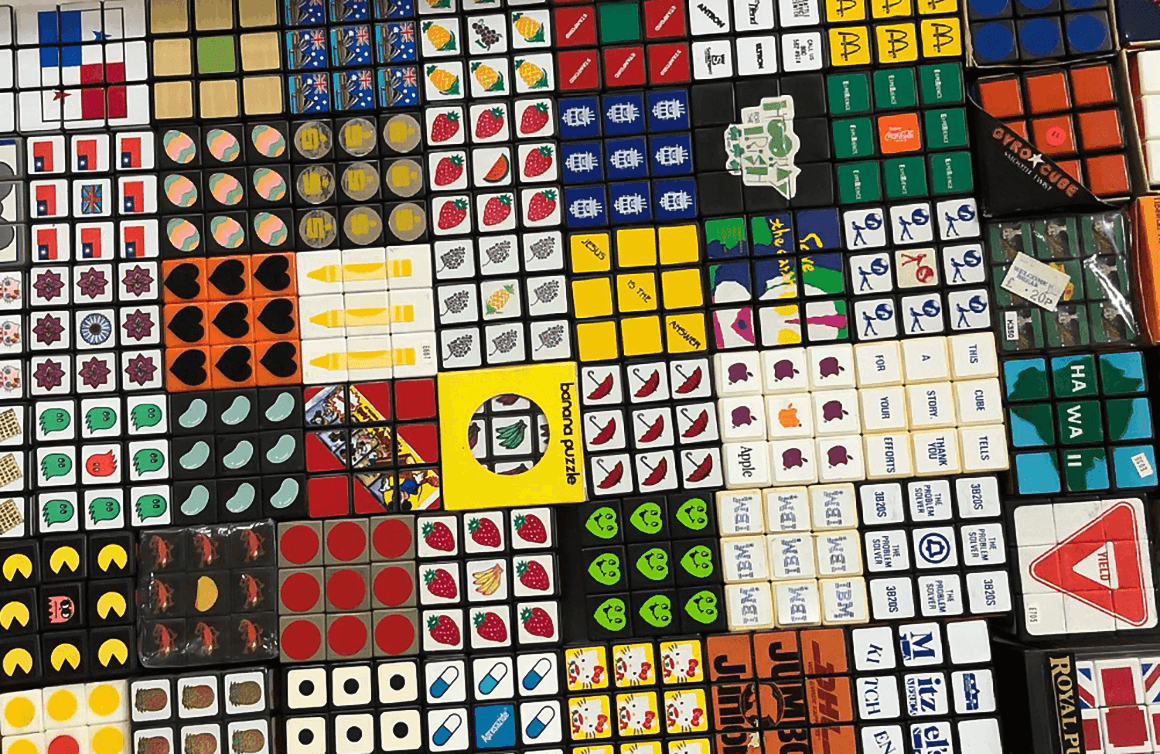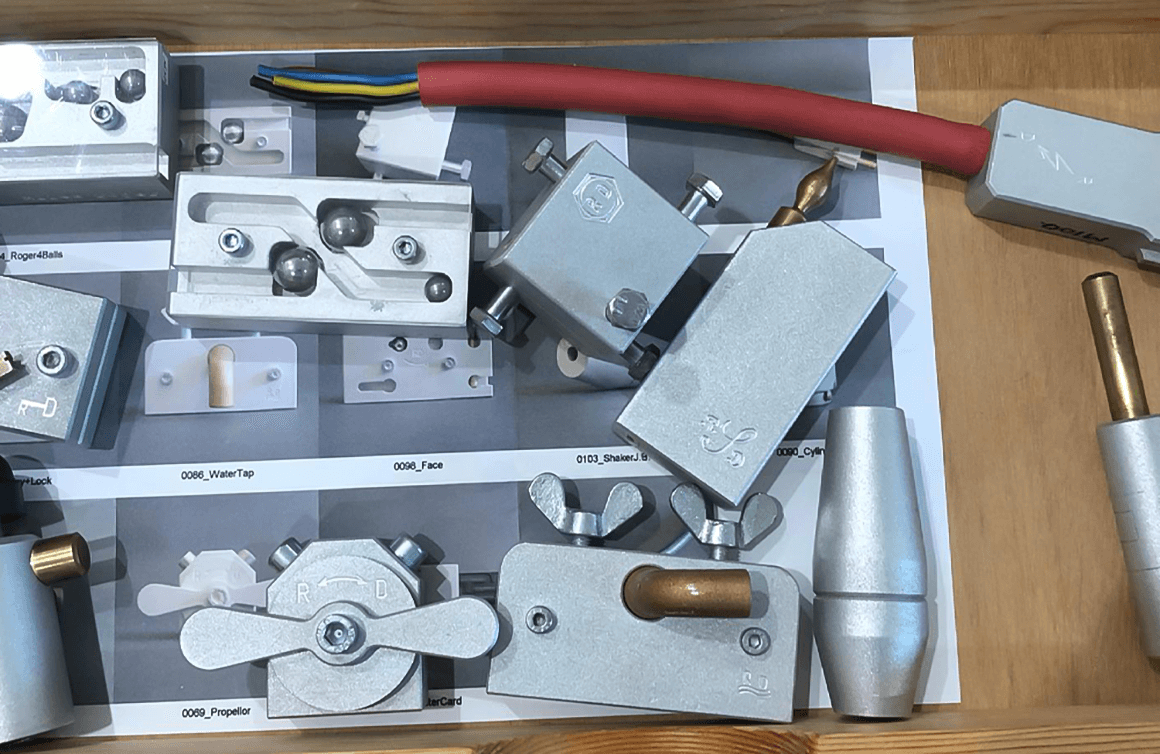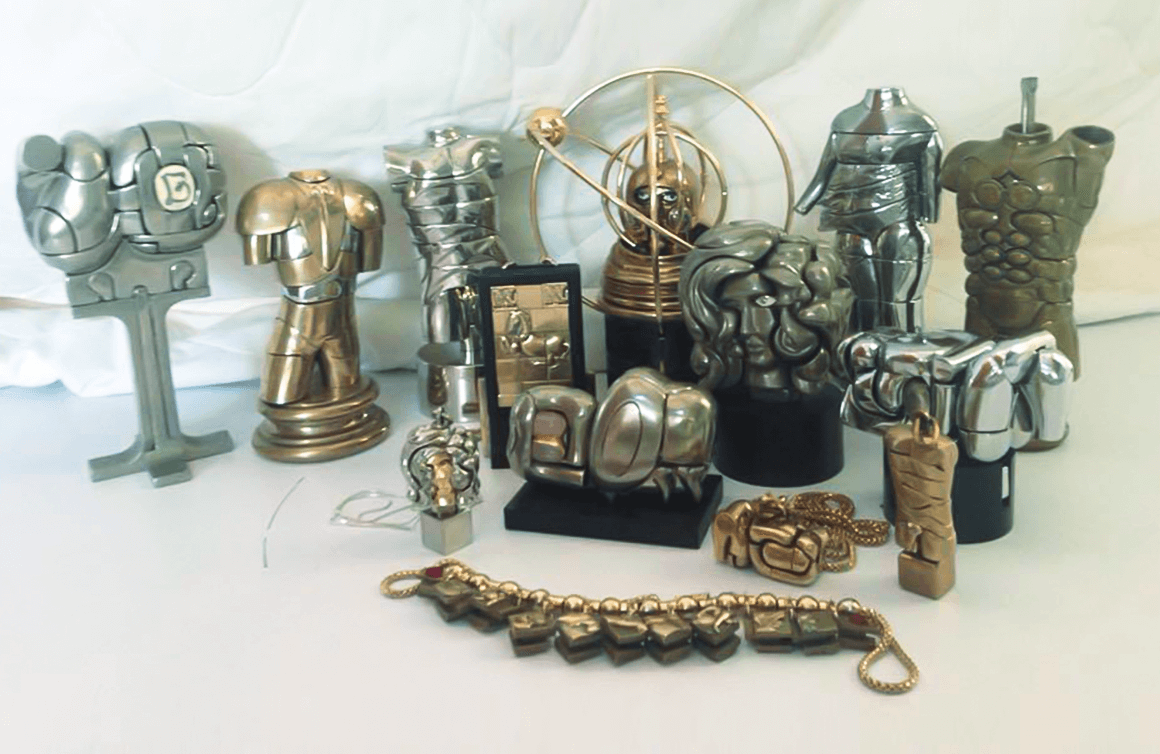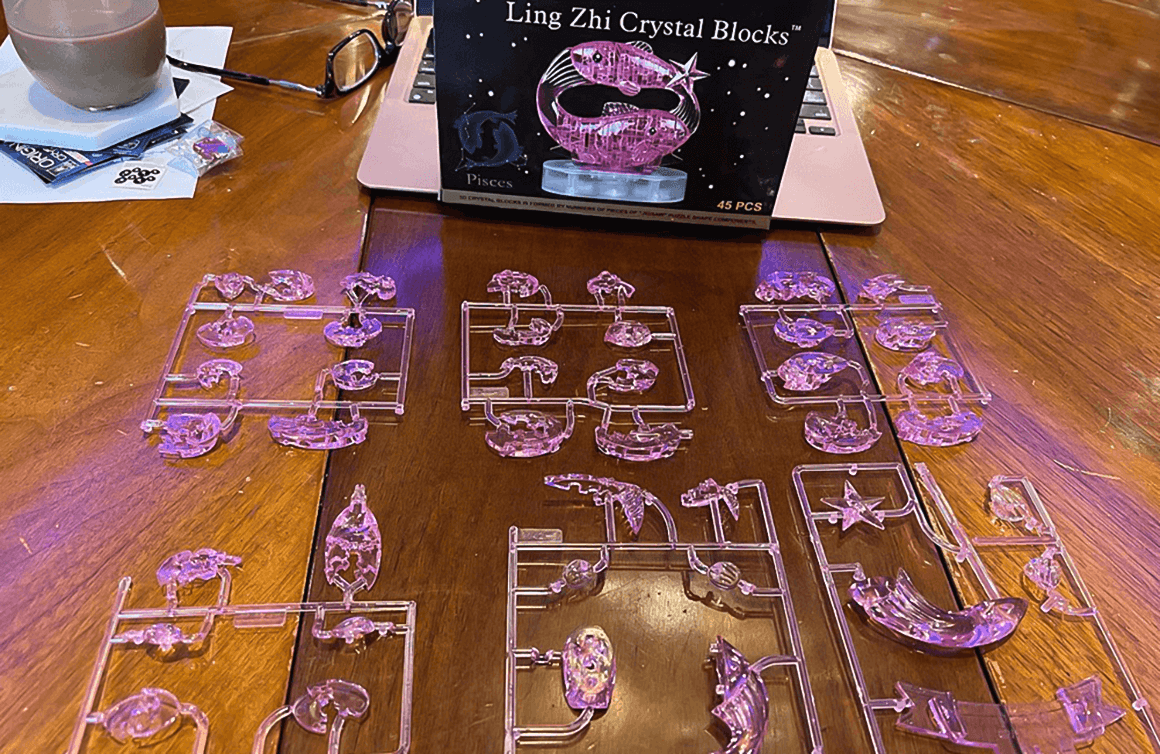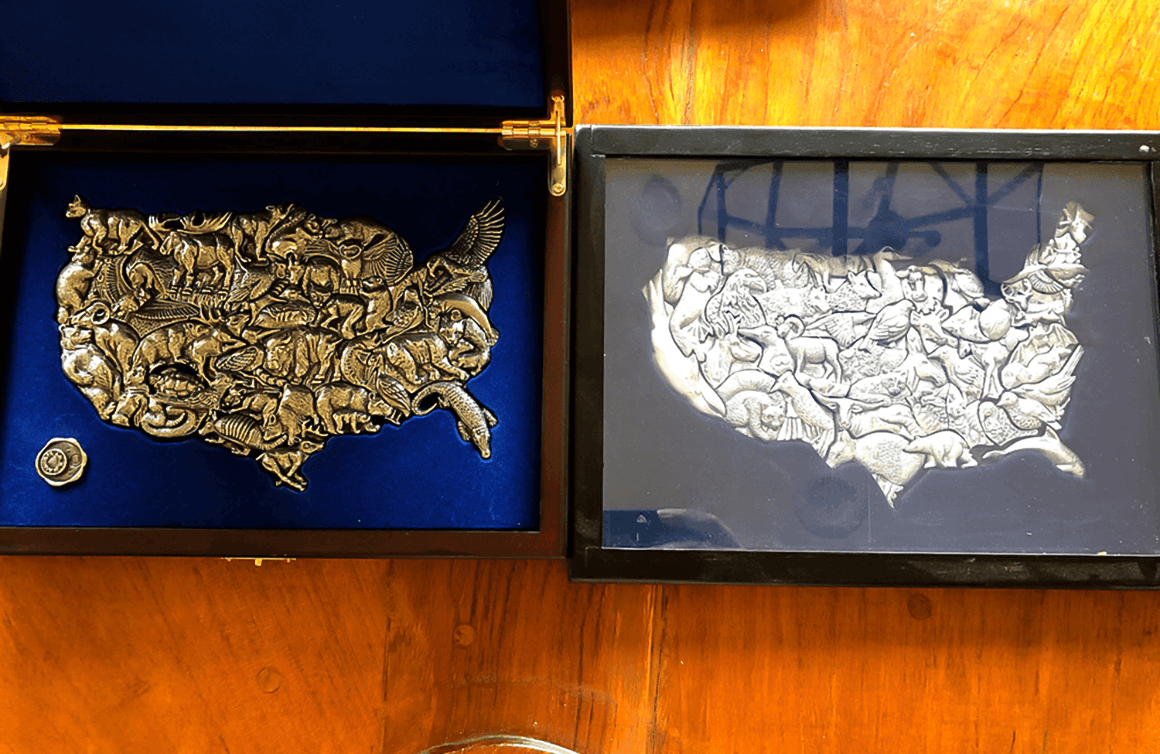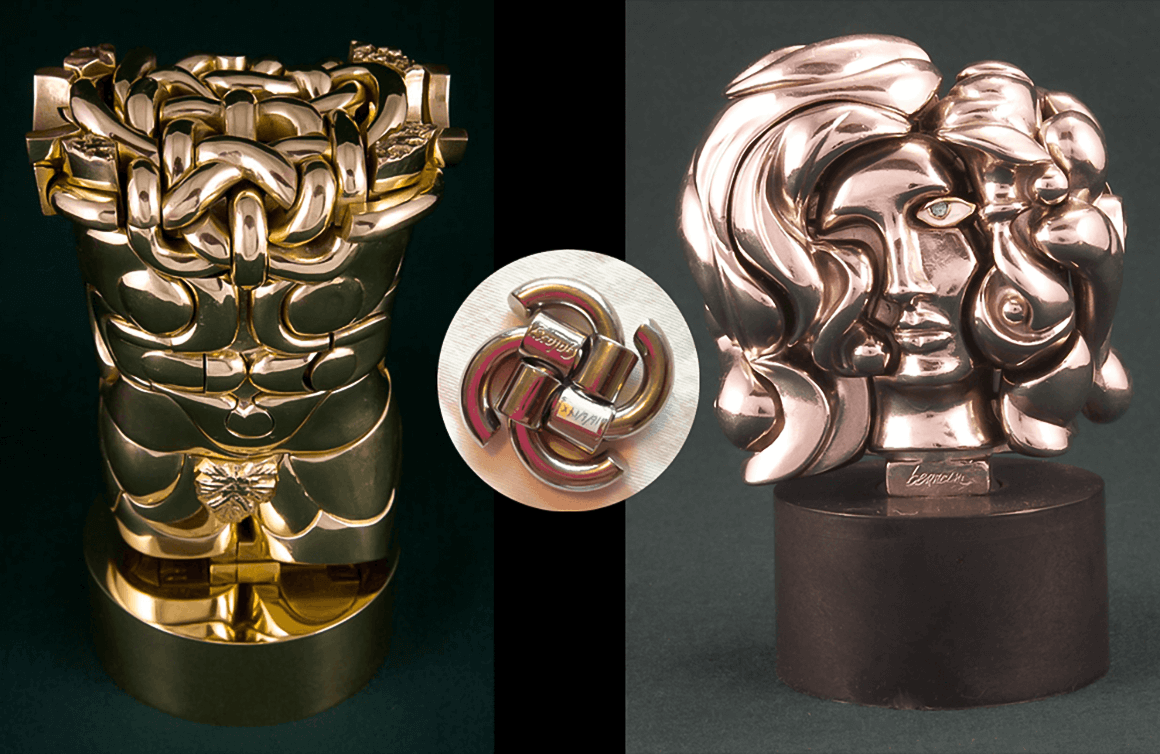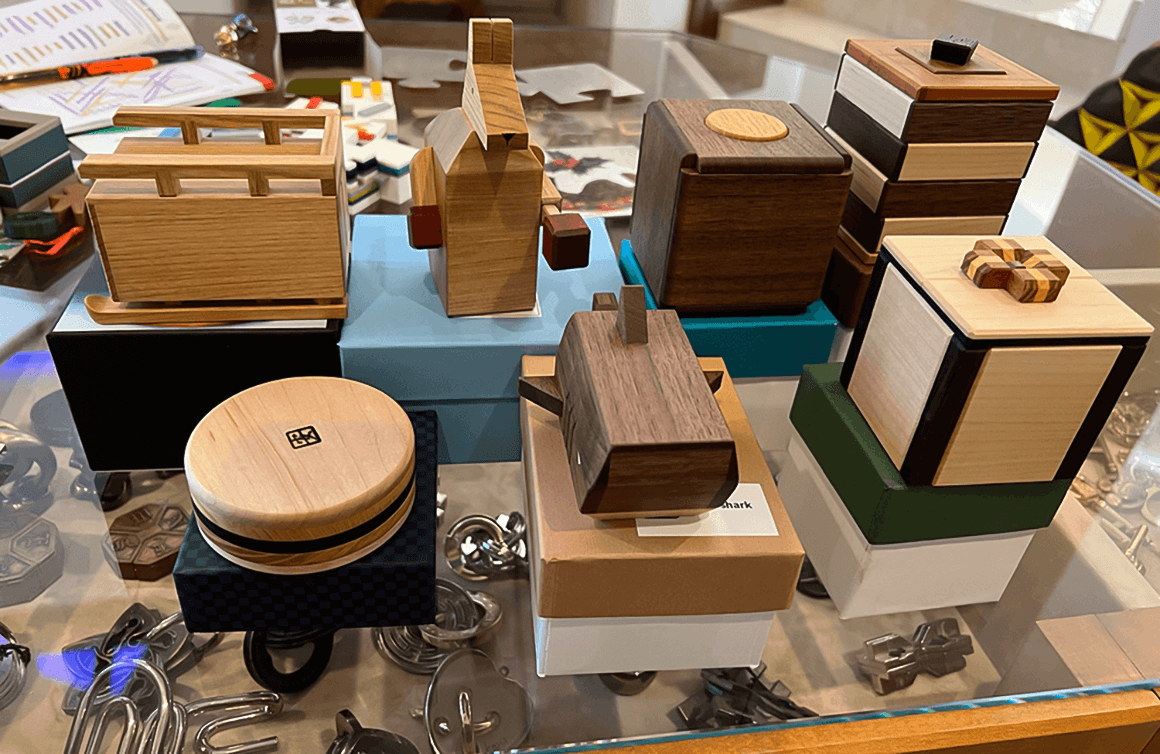How do you describe your collection?
My husband, George Miller, and I have more than 60,000 individual puzzles. Each one is unique.
Our collection comprises mostly manipulative puzzles. I know when people think of puzzles, they automatically think of jigsaws and we do have some of those as well. We recently acquired a collection of puzzles and jigsaws were part of that. The collection that we acquired is the collection of collections.
Backing up a bit, Goerge and I each had individual collections when we met. Individually, we had at least 10,000 different puzzles each at that time. When we married, we identified about 3,000 duplicates. Ours is the largest collection of puzzles anywhere in the world. The next largest would be the Jerry Slocum collection at the Lilly Library; they house about 30,000 puzzles.
We also have a museum of our own and visits are by invitation only. Our philosophy is “display and play” — people can pick up, analyse, and manipulate any puzzle we own.
Several of the puzzles in our collection are worth more than some people’s cars. We have the very first jigsaw puzzle ever produced. It’s from 1767. To our knowledge, it is the only example that is complete. It’s so unique — truly irreplaceable.
When and why did you start your collection?
I was six years old and my grandparents were having a barbecue with their friends. I wanted to play badminton with my grandfather. He gave me a wire disentanglement Gilbert puzzle — they were a collection of 12 different puzzles — to keep me occupied. He told me that when I solved one, he would play badminton with me. I finished the puzzle and brought it to him. He brushed me off and gave me another puzzle. I went through the entire set of 12. He did finally play badminton with me. That was the start of it for me.
For George, he was about 8-years old. He was given a kumiki burr for Christmas. He was also given a set produced by a company in Japan that claimed that there were something like 8 different puzzles that could be solved from it. George analysed it. He wrote a letter to the company to let them know that they had made a mistake. There were actually 12 or 13 puzzles that could be made from it. He never got a reply back from them, but he’s been puzzling ever since.
How do you display and store your collection?
The collection is housed in 2 private homes.
Most of the collection is in our second home, which is the majority of the museum and research centre. When we acquired the complete collection I mentioned earlier, we bought a second property to house it. There are about 40,000 puzzles there. If people want to do research on puzzles, they stay at the second home while they are with us. That home has a 26-foot-high ceiling. We have floor-to-ceiling ceramic, glass, and porcelain puzzles there. We call it the Great Wall of China. We have rooms dedicated to children’s puzzle books, metal, keychains, and wooden boxes puzzles.
The rest of the collection is in our primary home. We have space there for students and visitors, as well. It’s set up more for research purposes than playing. Having said that, we have hosted puzzle parties. It has a formal dining room with mirrored walls. Imagine eating in a mirrored room! We didn’t like it, so we put up shelves with a variety of Rubik’s Cubes there. I’ve put together crystal puzzles — the best way to describe them is as 3-dimensional jigsaws. I have a complete collection. If it’s been made, I have it. That mirrored display looks like a giant kaleidoscope. It’s very nice.
There’s an organization called the International Puzzle Party. It has about 400 members who meet in a different country each year — pandemic excluded — and exchange 100 puzzles with members. We are like-minded people who collect manipulation puzzles. We display the puzzles received as gifts in a massive rotunda with floor-to-ceiling shelving going around the rotunda. It’s the perfect place to display those.
We collect puzzles created by a Spanish artist named Miguel Berrocal, who has now passed away. I have the largest collection of those puzzles. The Berrocal sons let me know when one is coming up for auction so I can look into it. Those puzzles stay in our primary residence because I just love them.
George is putting together a database to track our collection while we are on this cruise now. Otherwise, everything is in my head. I know where every single puzzle is.
What do you consider to be the Holy Grail of your collection?
Wow. Well, of ones that I own, had you asked me that question 6 months ago, the answer would have been a disassembly puzzle by Berrocal called Hoplita, a spartan warrior. It’s a piece of art. Today, though, I would say my favourite is The Lovers. We commissioned the puzzle made by Jordan Simon. When I met George, I dreamed of having this puzzle made and now it’s in the house. It’s a bronze lifestyle puzzle of George and me. It’s the pinnacle of our collection, I think.
There was an assisted chest puzzle that I was offered but didn’t purchase. The seller kept changing the purchase timeframe and price. I backed out. It was an expensive puzzle and I backed out because I was concerned it was a scam. As it turned out, it was a very nice puzzle.
What advice would you give to someone interested in starting a puzzle collection?
The first thing I’d say is: don’t do it! There is no money in puzzles. If you want to collect, collect because you enjoy it but don’t collect thinking that they will appreciate in value and you’ll be able to sell them for more later on down the road. It’s very rare that that happens.
Also, if you see something you want and you can afford it, buy it because it might not be there tomorrow. If you can’t afford it, don’t not put food on your table to get a puzzle.
George is beside me now and he’s going to say something else, I’m sure it’s very different from mine.
George: The oldest puzzle in the world is considered the Stomachion, reportedly by Aristotle. The world went by for many years before another puzzle was made. They slowly came into the intellectual sphere of humankind. With the advent of the computer — and more recently, the internet — puzzles have become more popular. They’ve accelerated to such an extent that it’s impossible to have a complete collection of all the puzzles in the world. Totally impossible. That would be like trying to collect all the butterflies in the world. Usually, people have a collection of the genre of puzzles they like. Some people collect puzzles to solve them and when they finish solving them, they sell them or give them away to their friends, just like you would a book. Other people like to collect them and keep them in their library. And, some people like to invent puzzles but don’t like to collect them. Not all puzzles appeal to every person. Some people like jigsaw puzzles and just collect those. I happen to like interlocking puzzles and Roxanne likes twisty puzzles. You can’t collect them all. We’ve tried, God knows.
Roxanne chronicles her and George’s collection on Notes from Puzzle Palace.
Drop us a line to let us know about your collection of vintage toys and/or games. We just may feature your collection!

